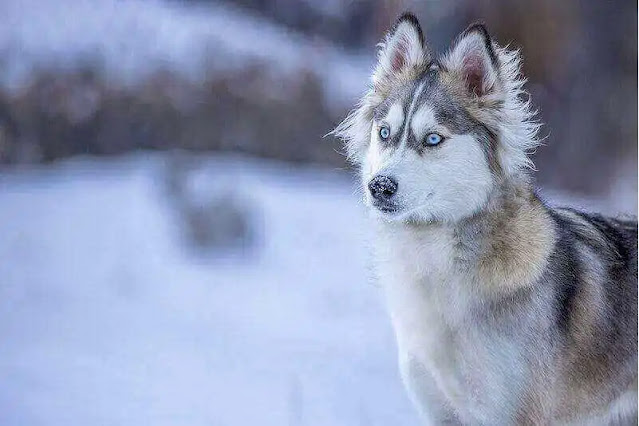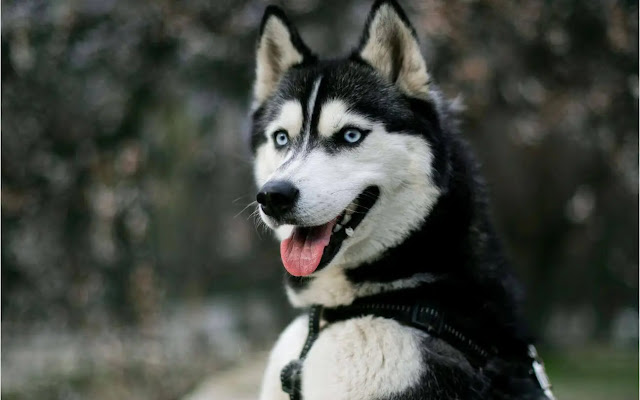Facts about a husky | Siberian Husky
 |
| Siberian Husky |
Siberian Huskies, a working dog breed, was raised in Siberia by the Chukchi people, who valued them as their Sled Dog, their companion, and their guard. Siberian Huskies are from Siberia. The Chukchi people breed Siberian huskies as companion dogs, and for working as a sled dog during the long, cold winters in Siberia. The Siberian husky originates from northeast Asia, where the Chukchi developed the breed specifically to use as a sled dog.
The husky is derived from a sled-pulling working dog of a northern region, which is ancestral. The Husky is a breed that was bred far northwards, making an excellent sled-pulling dog.
Alaskan huskies are generally less obstructive than Siberian huskies, making them easier to train. Chinooks tend to be more docile and less stubborn than many of the other breeds of huskies. Bred to work with other dogs, pulling sleds, each Husky breed does not enjoy being left alone for very long.
They need frequent companionship from humans and other dogs, and their need to feel part of the pack is very strong. This breed of Husky needs regular exercise and training, otherwise, this breed of Husky can get into some nasty behaviors. Huskies require lots of training and exercises to make them happy and healthy.
You could probably attribute that to Siberian huskies’ smarts and their history of running like Sled Dogs, so it is likely most house huskies are not getting as much exercise as their ancestors did, unless you are working the Husky extremely hard.
Older Huskies do require exercise, too, just not nearly as much as puppies or younger dogs.
Also, Siberian huskies tend to display independence, a downside to service dogs. Many people desire to have this breed for its stunning good looks, but always remember the dog’s temperament is the biggest factor when choosing a breed suitable to your lifestyle. If you cannot tolerate a dog’s hair, it is likely not the breed for you.
Siberian Huskies will produce very little shed over most of the year, then a fair amount during about a three-week period known as the blowout. It will be a chore to keep up with shedding during this period, and your house will probably be filled with piles of husky fur.
 |
| Siberian Husky |
A Siberian husky would fit naturally into your household, as long as you are active, and as long as everyone in your family or home is willing to maintain a good level of consistency with the training, as well as keeping an eye on your dogs, whether playing in the garden, or when they are outside for walks. Given their history as working dogs, Huskies are very gentle, affectionate dogs that crave being around family, so having lots of time with your dog is a necessity. As outdoor-minded and hardworking as these dogs are, you will find that Huskies are gentle, good-natured dogs that enjoy being around humans, not being overly attached or needy. Playing with other dogs is a good way to get some of that steam out of your Huskies.
Labrador Huskies are loving, faithful family dogs, but they are not as active as larger types of Husky breeds. Labrador Huskies are muscle dogs weighing between 60-100 pounds, living 10-13 years. Labrador Huskies are medium-sized breeds, and they can grow up to around 20-28 inches tall from their shoulders to their ground.
Ranging from 35-50 pounds, this breed of Husky stands taller than their strong-willed, obstinate Siberian cousins in Greenland. Siberian huskies were first bred in Northeastern Asia by the Chukchi people, and were kept as companion dogs to their families, and also as a type of stamina-sled dog. The U.S. Kennel Club recognized the dog as an Arctic husky in 1938, changing its name to the Siberian husky in 1991.
The Greenland Dog is also called a Canadian Eskimo dog, although the two breeds are meant to be considered different as they were developed in different parts of the world. Several Arctic dog breeds are associated with the higher latitudes-the Siberian husky and Greenland dog, which are also associated with Arctic human populations, and, to a lesser degree, Shar-Pei and Finnish Spitz.
The Chinook is a rare breed, descended from the hybridization of a farm dog and the Husky. They are similar to the Husky, but they have a golden-brown mix coat rather than their more typical black-and-white coat. Coat colors such as black, white, gray, or white with spots are found in this breed of Husky. To breed a husky, you will need a female husky who is 2 years of age and a male husky who is at least 6 months old.
If you are thinking about adopting a husky, you are going to have to put in a lot of puppet-proofing before bringing the new dog into the house. Start getting used to having your husky brushed and checked out while the Husky is still a pup. If your husky sees a squirrel or another prey animal, it will run for it, and may not listen to your commands. One way or the other, your husky is going to need an outlet to use his energy every day.
 |
| Siberian Husky |
Their breed is not possessive, too suspicious of strangers, and it is not aggressive toward other dogs. Their intelligence, trainability, and eagerness to work make them pleasant companions and willing workers. The dogs included below are puppies who are real Sled Dogs, with the exception of Miniature Husky. Siberian Huskies function like a sled dog, with the least amount of positive guidance by a handler, with a handler’s dependency on the Siberian Huskies making decisions on their own under adverse conditions, making use of two other forms, Instinctive intelligence and Adaptive intelligence, too much greater effect.


Please do not enter any spam link in the comment box